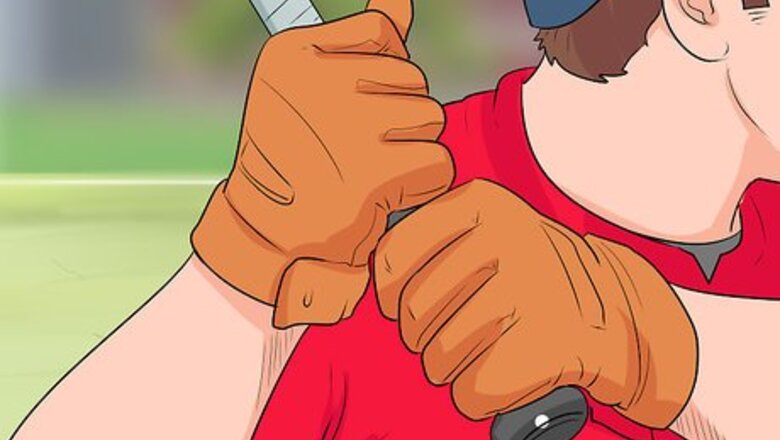
views
Hitting the Ball Hard
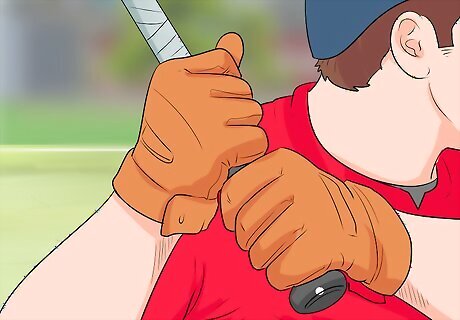
Grip the bat with both hands near the bottom of the grip. Your dominant hand will go on top. The middle knuckles of your upper hand should line up with the bottom of your fingers on the lower hand (part of the finger between your palm and middle knuckle). Gripping the bat 1–2 inches (2.5–5.1 cm) above the bottom is called “choking up.” You can get more power the lower your hands are, but choking up improves bat speed. Find a comfortable spot for you.
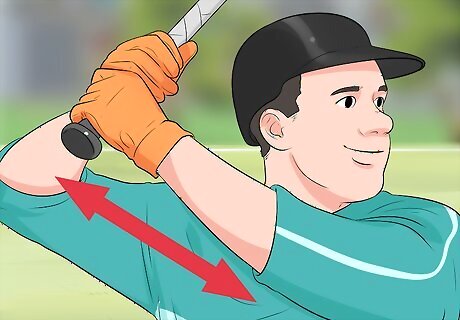
Hold the bat up and in front of you. Your elbows should be roughly nipple height and the bat will be 8–12 inches (20.3–30.5 cm) away from your chest. Make sure you're comfortable, relaxed, and can swing the bat with ease. Keep the bat high – shoulder height or higher – in order to come down on the ball with power.
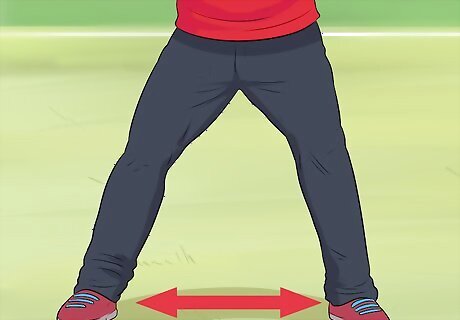
Plant your legs slightly more than shoulder-width apart. Your toes should point towards the plate and your legs will be spread apart. Your feet should face in front of you. Do not splay your toes out to the side or in towards the plate.
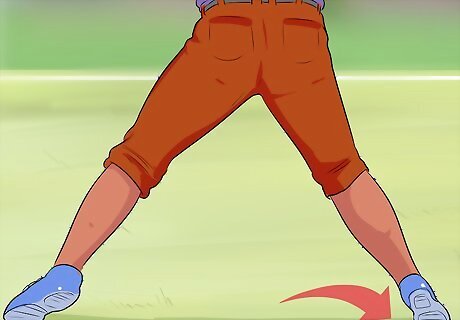
Rest on the balls of your feet and keep your weight back. The ball of your foot is the small area in between your toes and your arches. Keeping your weight on the balls of your feet lets your move quickly. Rest roughly 60% of your weight on your back foot, towards the catcher. You should be able to quickly pick up your front foot and step it towards the pitcher's mound.
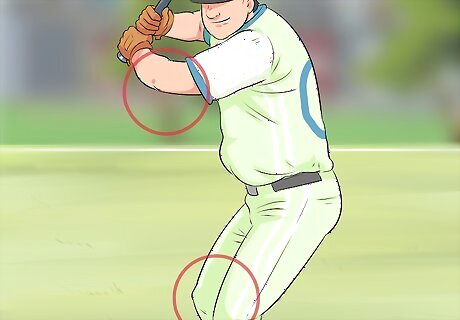
Relax your elbows and knees. You want a slight bend in your elbows and knees, allowing you to move quickly and smoothly when the pitch comes. This is a small point, but an essential one if you want to catch up to a fast pitch.
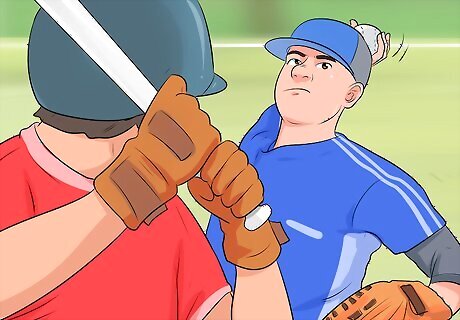
Point your eyes and head directly at the pitcher. You need to be able to see the pitcher and the ball the entire time it is coming at you. If it helps, turn your front foot slightly towards the pitcher to open up your body. Keep your eye on the ball the entire time you are swinging.
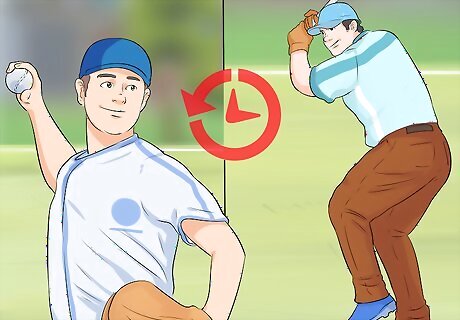
Time your step with the pitcher, if you take a step. If you are a batter who steps with the front foot, time your step to end when the pitcher's leg touches down. Your front foot should be planted on the ground when the ball is released.
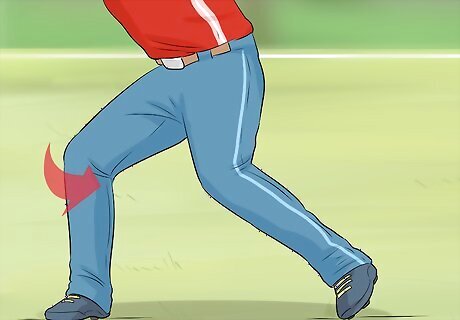
Turn your back knee towards the ball as your front heel touches down. This initiates a strong, powerful swing. As you start your swing your front foot must be planted firmly on the ground or you will lose balance and power.
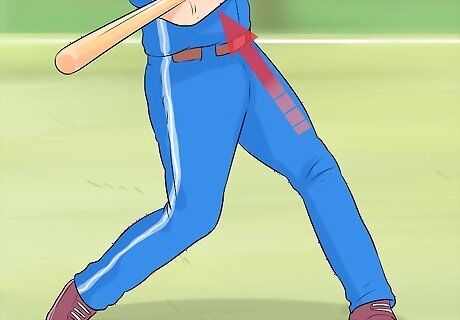
Start your swing through your hips, transferring your power from your legs to your torso. Your back foot will pivot on the toe and your hips will turn towards the pitcher as your bat approaches the ball. You will feel your weight start to transfer towards your front foot. Your hips are where your develop your power – think of your hips as a tightly wrapped rubber band uncoiling as your turn towards the ball. Make sure you are turning your hips before your hands. Remember the adage: “your hips lead your hands.”
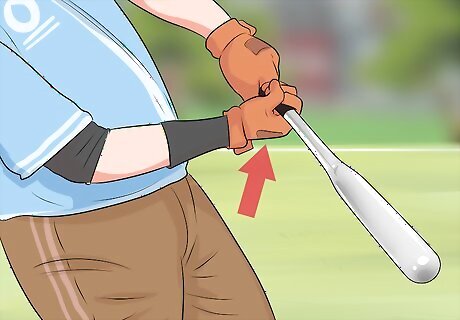
Use your lower arm to guide the bat to the ball. Your lower hand is the one that puts the bat on the ball, so try to match your lower hand with the trajectory of the ball. Think of taking the knob at the end of the bat and swinging it on the same path as the ball. Your lower hand also helps you get speed, but do no try to “pull” the bat forward. Your hips are driving the bat forward and your hands are helping guide it.
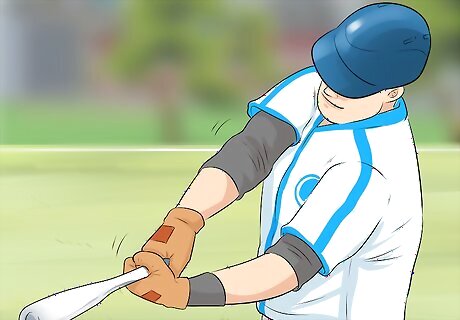
Bring the elbow of your upper arm close to your chest. Your top arm keeps your swing quick and compact. Begin to tuck your elbow in towards your chest to shorten your swing, driving the bat quickly through the ball. Make sure your elbow stays behind your hands as you tuck it in. You want your hands to lead the bat.
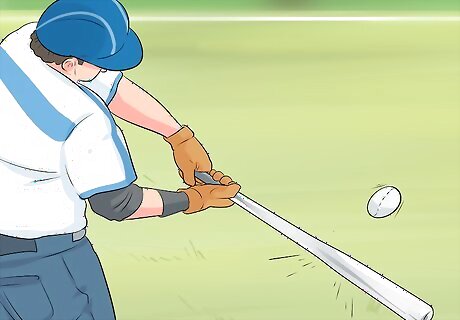
Swing your hands through the ball, not at it. You want to keep swinging through the ball, not stopping after making contact, to get real power. As you make contact, imagine that there are two more balls right behind it that you need to hit as well. Your momentum will take the bat around your body as your weight shifts forward.
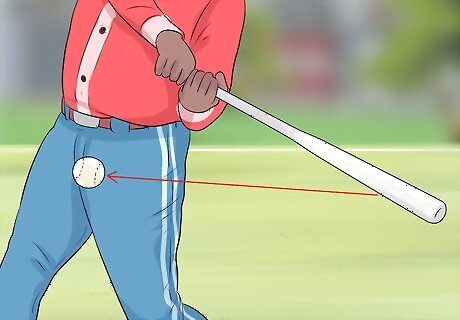
Hit the ball with backspin. Home run balls need backspin to help them fly longer. There are two good ways to get backspin: Stay on the inside of the ball. Keep your swing compact and think of hitting the half of the ball closer to your body. Hit down on the lower two-thirds of the ball. This lifts the ball and spins it backwards off the bat, allowing it to cruise towards the bleacher seats. You might feel like you are almost “chopping” at the ball, but the trick is to catch the bottom two-thirds of the ball to get power.
Training for Home Runs
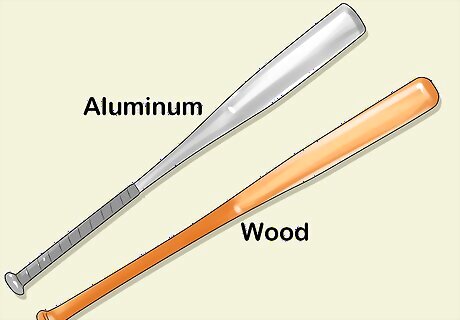
Choose the right bat. While there a lot of different ways to choose a bat, the most important criteria is comfort. You should, first and foremost, feel natural when swinging. To find the correct bat you should take your dominant hand and hold the bat parallel to the ground. It should feel slightly heavy and difficult to hold up. Choose a bat a 1/3 of an ounce lighter than this weight. Check out this table of bat lengths by body type to get a good idea where to start shopping.
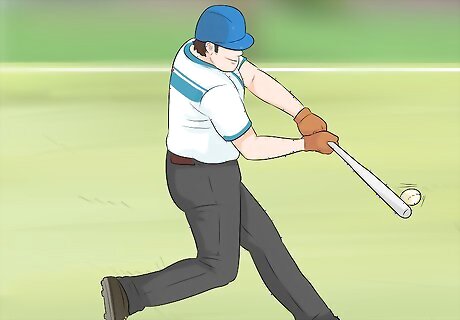
Relax your swing. This is the best thing you can do to get more power on the ball quickly. You want your arms and knees to be slightly bent and loose, not tensed. Work on swinging naturally and smoothly, avoiding jerky movements meant to hit the ball hard. Remember, good mechanics and a smooth swing are more important than trying to force as much power on your swing as you can.
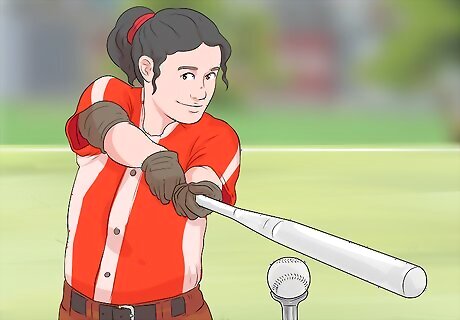
Hit off of the tee. Despite its reputation as a little-league tool, the tee is great way to practice your swing mechanics and work on hitting the bottom 2/3 of the ball. Take 20-30 reps every day your practice, practicing not only how you hit the ball but where. Focus on hitting the lower two-thirds of the ball to get the best height and distance on the ball you can. You can tell when you hit it well by comparing distances.
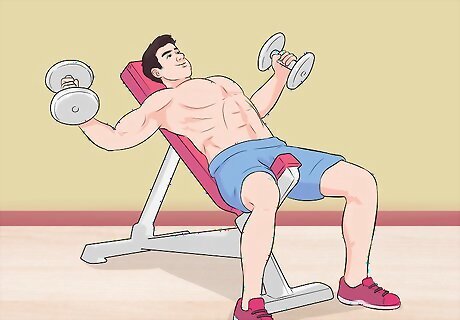
Lift weights to get stronger. While even smaller players can hit the ball out of the park with good mechanics, it is easier to hit the ball farther when you are stronger. Remember, however, that swinging a bat requires your whole body, not just your arms. Areas to focus on include: Abs and Core: A strong core helps you transfer energy from your legs through your torso, and is essential for bat speed and power. Incorporate sit-ups, crunches, planks, and medicine ball throws into every workout. Legs: Most of your power comes through your legs, so you can often make the most dramatic gains through squats, leg presses, and box jumps. Arms: Of course, you have to have strong arms to hit the ball hard. Practice swings and hitting off the tee should be a part of every workout, but you can also incorporate barbell rows, bench-press, and forearm curls to gain the bat speed needed for home runs.

Videotape your swing to find mistakes. This is one of the best ways to diagnose problems with your swing and get more power. Set up a camera and take 10-20 swings from a pitcher and 10-20 off of a tee. There are several common problems to note: Dropping your or hands before your swing. Moving your lower body frequently before and during the swing. Forgetting to turn your hips. Opening the feet away from the plate.
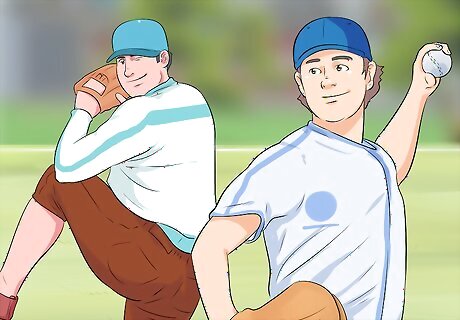
Practice hitting off a variety of pitchers. The best way to hit home runs is to keep practicing. You need to work hard to get used to different pitches, hone your mechanics, and build strength with the bat. Practice makes perfect, so take as many chances you can to hit pitches. Having a coach or trusted friend to point out mistakes or tweak your form often helps.
Finding the Right Pitch to Hit
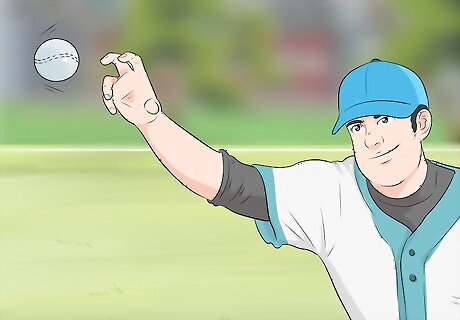
Find the pitcher's release point. This is the point in the throw where the pitcher releases the ball and is usually when his arm is highest. For softball, the ball is usually released just past the pitcher's thigh. Start your swing shortly after the ball is released. This is the best way to time your swing. If you know when the ball is released, you know when to start your swing.
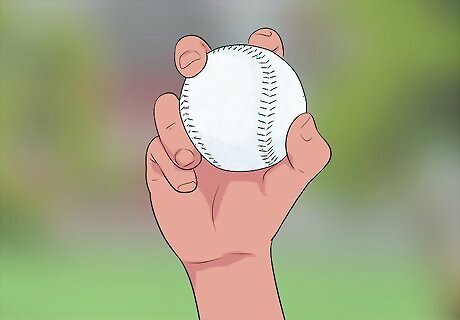
Watch a pitcher's wrist to determine how the ball is thrown. Other than grip, which is often impossible to tell, the way a pitcher follows through often determines a pitch's movement. This applies for softball pitchers too, except their wrists snap up, not down. If the pitcher snaps his wrist down then they are throwing a fast-ball or change up, which only moves vertically. These pitches are usually faster, so swing earlier. If the pitcher torques their wrist to the side they are likely throwing a change-up or slider, forcing the pitch to move side to side. These pitches are usually slower, so hold your swing a half second. If the pitcher does not move their wrists, they are throwing an unpredictable knuckleball pitch. These are frequently slow and difficult to predict
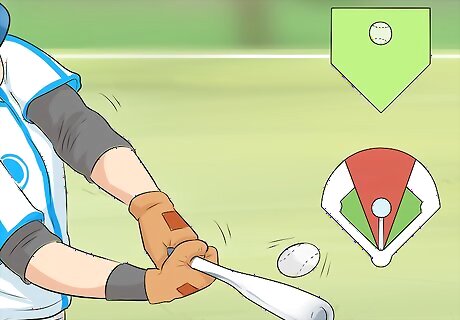
Look for pitches on the inside and middle of the plate. When a ball is thrown closer to your body you can get all of your power behind the ball. As you swing, your body will turn and catch the ball on the inside, “pulling” it and making contact with the “sweet spot” of the bat.
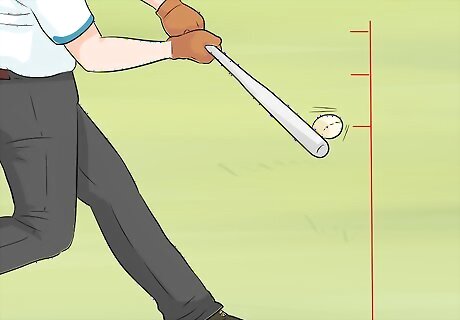
Know that lower pitches are easier to hit out of the park. According to statisticians, the optimal height to hit a home run is between 2 and 3 feet off of the ground, usually in between your knees and waist. While everyone has their preferences, lower pitches are easier to get under and drive up and out of the park.
















Comments
0 comment